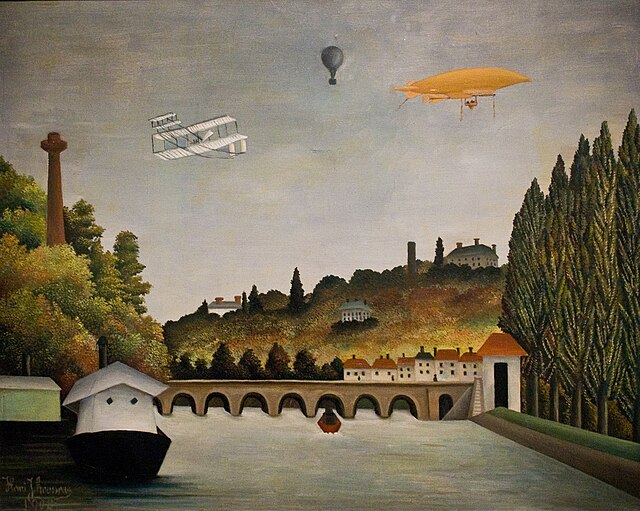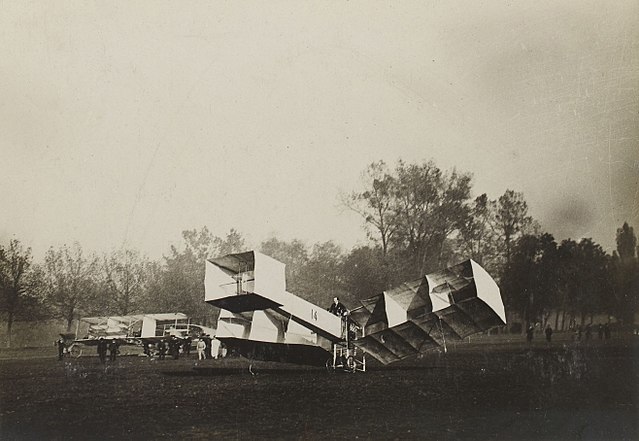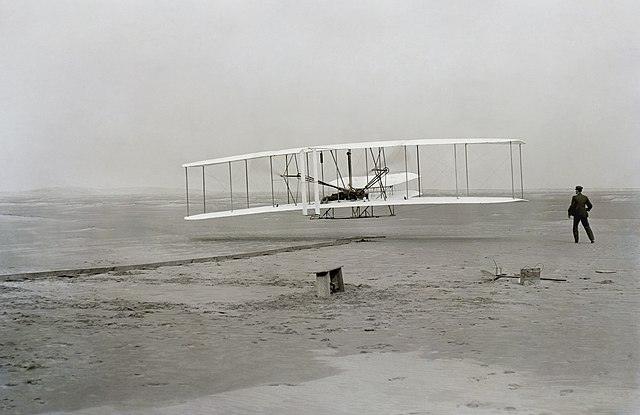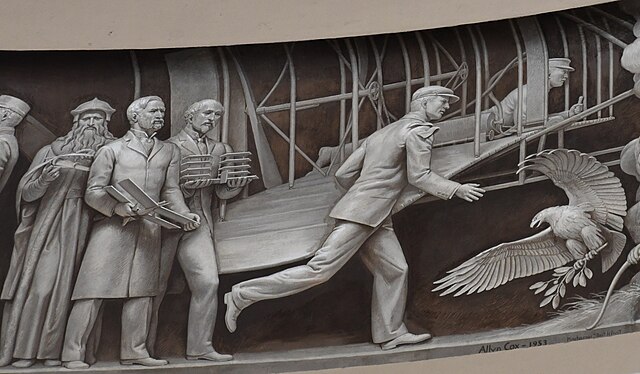Aviation in the pioneer era
The pioneer era of aviation was the period of aviation history between the first successful powered flight, generally accepted to have been made by the Wright Brothers on 17 December 1903, and the outbreak of the First World War in August 1914.
Vue du Pont de Sèvres, painted in 1908 by Henri Rousseau
Wilbur Wright gliding, October 1902
Photo of Santos-Dumont's 12 November 1906 aileron-fitted Quatorze-Bis, for its concluding series of flights before retirement.
Henri Farman winning the Grand Prix d'Aviation, 13 January 1908
The Wright Flyer made the first sustained flight by a manned heavier-than-air powered and controlled aircraft—an airplane—on December 17, 1903. Invented and flown by brothers Orville and Wilbur Wright, it marked the beginning of the pioneer era of aviation.
Wright Flyer
Patent plan
Displayed in the U.S. Capitol Rotunda, the Frieze of American History detail The Birth of Aviation depicts Leonardo da Vinci, Samuel Langley, Octave Chanute, and the Wright Flyer's first flight
Distant view of the Wright airplane just after landing, taken from the starting point, with wing-rest in center of picture and launching rail at right. This flight, the fourth and final of 17 December 1903, was the longest: 852 feet (260 m) covered in 59 seconds. The photo was published in 1908.








